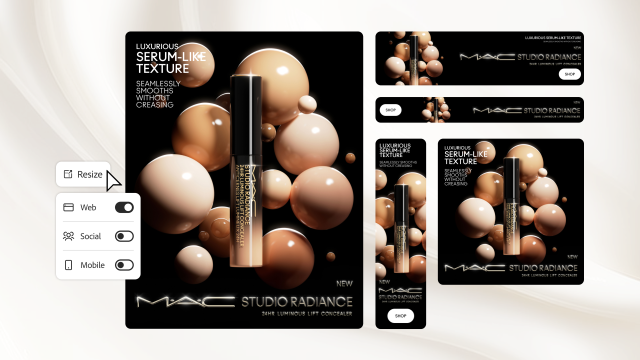The Estée Lauder Companies (ELC), parent to luxury beauty brands including Clinique, MAC, and La Mer, has partnered with Adobe to integrate generative AI tools into its marketing workflows, aiming to accelerate content production amid industry projections that digital campaign demands could quintuple by 2026.
ELC will deploy Adobe Firefly, a suite of generative AI APIs, to automate repetitive tasks like resizing images and reformatting assets for social media, e-commerce, and app promotions. The move targets operational bottlenecks: ELC’s teams currently produce hundreds of thousands of marketing assets annually across its 25 brands, straining creative resources. Adobe Firefly Services, integrated into ELC’s existing Creative Cloud workflows, will handle repetitive design adjustments, freeing teams to focus on ideation and campaign strategy.

The initiative aligns with ELC’s broader Beauty Reimagined strategy, which emphasizes speed-to-market and digital consumer engagement as the company competes in a $90 billion global prestige beauty market. ELC also modernized its digital asset management (DAM) system using Adobe Experience Manager, improving search capabilities and asset deployment efficiency.
The collaboration reflects a growing push by consumer brands to adopt AI for scaling content. A survey cited by Adobe suggests 66% of marketers expect content volume to grow fivefold by 2026, driven by platform fragmentation and personalized advertising needs. Competitors like L’Oréal and Sephora have similarly turned to AI for tasks such as virtual try-ons and dynamic ad creation, though critics caution overpotential homogenization of creative output.
“Generative AI removes hurdles that prevent designers from focusing on their craft,” said Justin Edwards, VP of Global Digital Creative at MAC Cosmetics, which piloted Firefly. Yuri Ezhkov, ELC’s VP of Creative Excellence, emphasized the need to keep pace with digital transactions, noting Adobe’s tools are “safe for commercial use.”
Implications for Marketers
For marketing professionals, the partnership underscores a pragmatic approach to AI: automating repetitive tasks while preserving human creativity for high-value work. However, it also highlights challenges, including the pressure to maintain brand distinctiveness as AI adoption grows. With 73% of marketers reporting burnout from content demands (HubSpot, 2023), tools like Firefly could alleviate strain—but success hinges on balancing efficiency with artistic innovation.
As digital content needs explode, ELC’s AI-driven workflow overhaul offers a blueprint for legacy brands navigating speed, scale, and creativity. Yet, the long-term impact on consumer engagement and creative quality remains to be seen.
